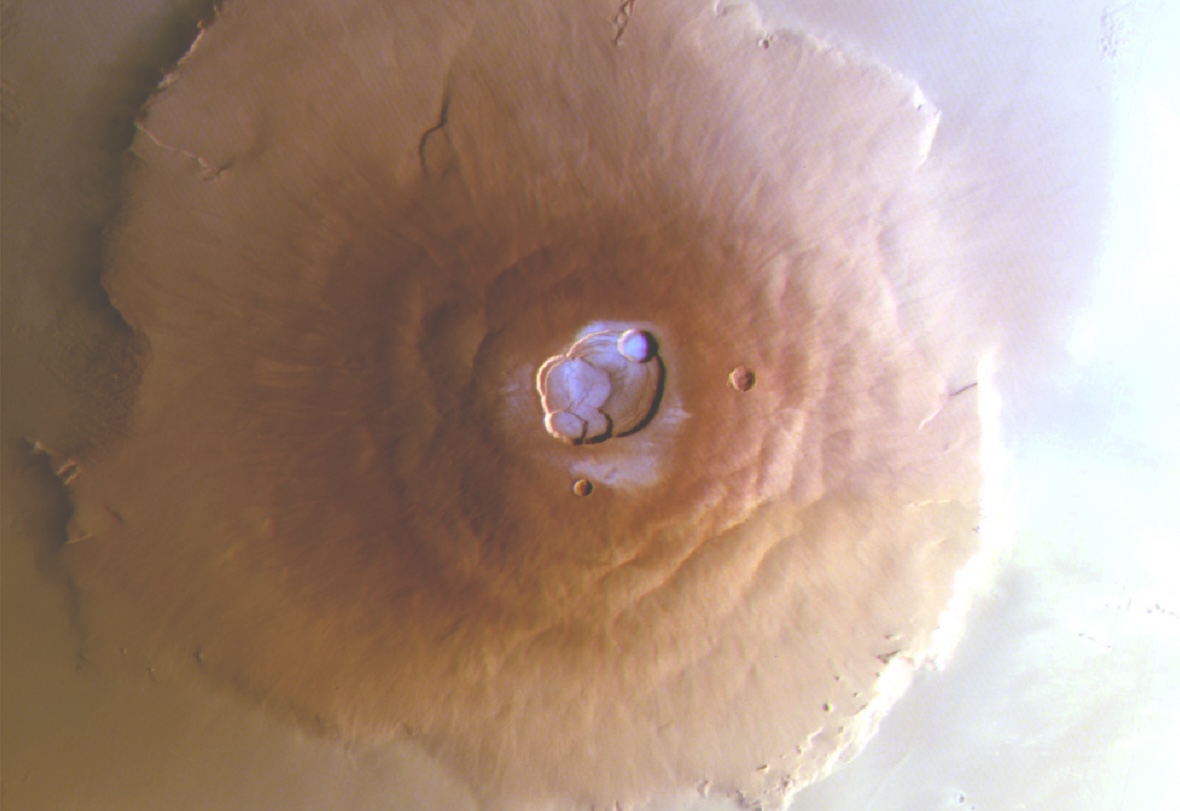
A team from the University of Bern detects frost on Mars’ tallest volcanoes
17 June 2024
 This image shows Olympus Mons, the tallest volcano not only on Mars but in the entire Solar System. | © ESA/DLR/FU Berlin
This image shows Olympus Mons, the tallest volcano not only on Mars but in the entire Solar System. | © ESA/DLR/FU Berlin
For the first time, water frost has been detected on Mars’ colossal volcanoes, the largest mountains in the Solar System.
This discovery was made by an international team led by the University of Bern, using high-resolution color images from the Bernese Mars camera, CaSSIS, onboard the European Space Agency’s ExoMars Trace Gas Orbiter (TGO). Understanding where water can be found, and how it is transported, is crucial for future Mars missions and possible human exploration.
The “ExoMars” program, initiated by the European Space Agency (ESA), marks the first active research into life on Mars since the 1970s. The CaSSIS camera system, developed and built by an international team under the leadership of Professor Nicolas Thomas from the Physics Institute at the University of Bern, has been observing Mars since April 2018, delivering high-resolution color images of the Martian surface.
An unexpected discovery was made using these high-resolution images by a team led by Dr. Adomas Valantinas. The study, published in the Journal Nature Geoscience, details the detection of water frost on the tops of Mars’ tallest mountains, the Tharsis volcanoes. These volcanoes, including Olympus Mons, which rises up to 26 km above the surrounding plains, lie at low latitudes near Mars’ equator, where high amounts of sunshine typically keep surface temperatures high, making frost formation unexpected.
Setting the stage for future exploration missions
To identify the frost, Valantinas and his team analyzed over 5,000 images taken by the CaSSIS camera. Since April 2018, CaSSIS has provided detailed observations of Mars, including local dust activity, seasonal changes in CO2 ice deposits, and the existence of dry avalanches. Professor Nicolas Thomas noted: “That we now could detect the nighttime deposition of water frost on Mars at visual wavelengths and at high resolution is yet another proof of the impressive scientific capabilities of the Bern camera system.”
Despite the frost patches being very thin—likely only one-hundredth of a millimeter thick—they cover a vast area. Valantinas estimated that the amount of frost represents about 150,000 tons of water cycling between the surface and atmosphere each day during the cold seasons, equivalent to roughly 60 Olympic swimming pools.
Understanding the water cycle on Mars is crucial for several reasons. It helps scientists comprehend the planet’s climate and is vital for establishing key resources for future human exploration. Moreover, it aids in understanding the past or present habitability of Mars. This groundbreaking research led by the University of Bern not only contributes significantly to Martian climate studies but also sets the stage for future exploration missions.

